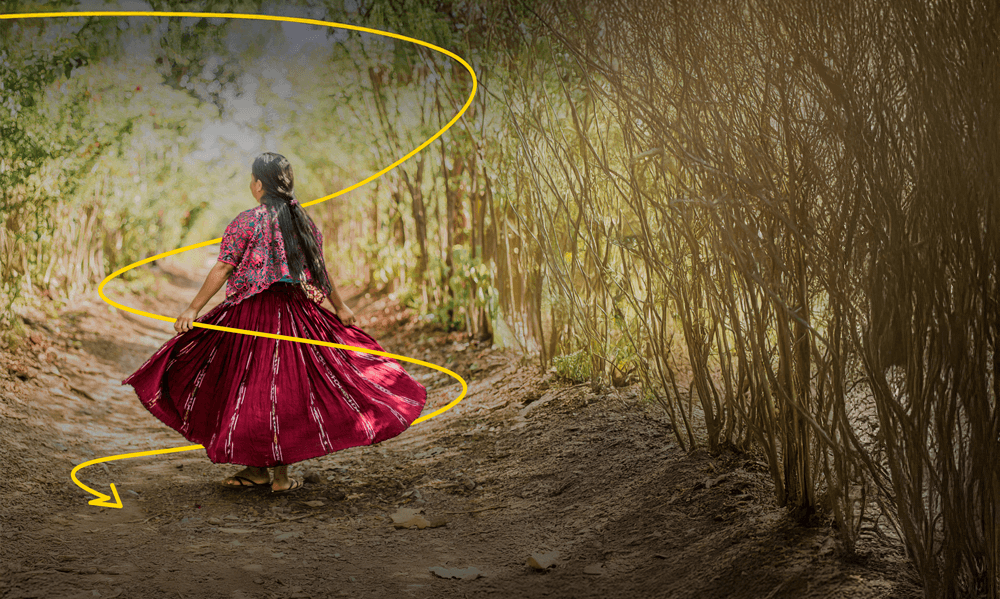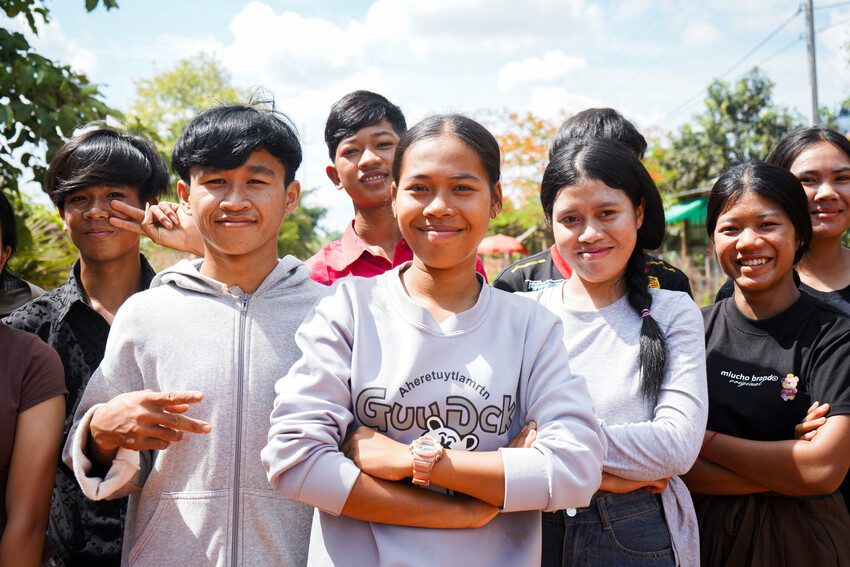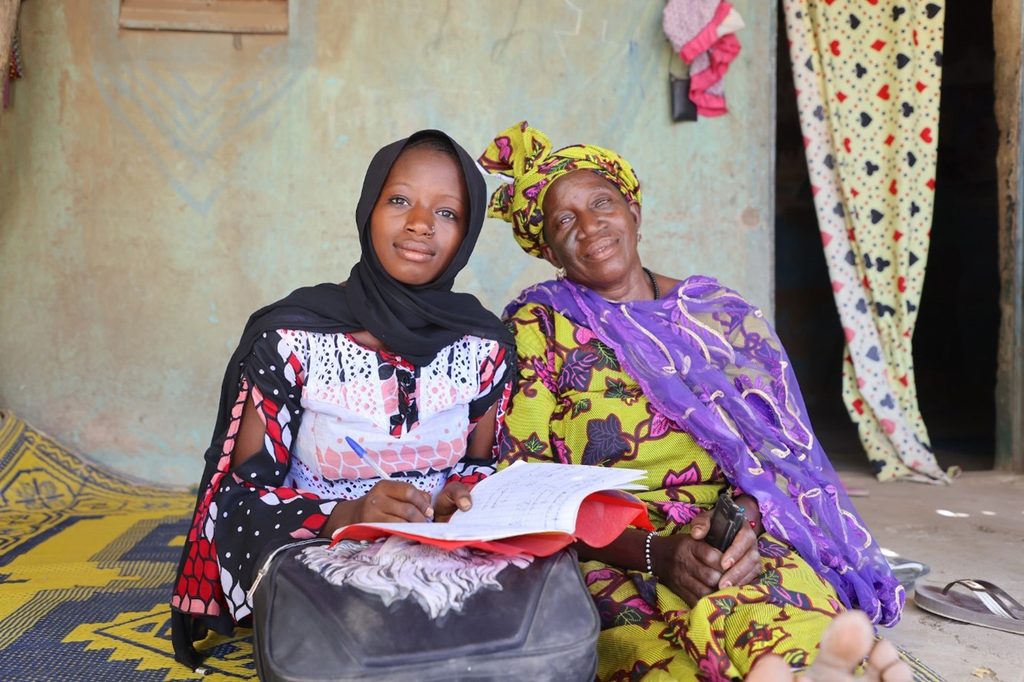From child brides to business owners
In Cambodia, young women who experienced child marriage are reclaiming their futures by setting up their own businesses.
Child marriage refers to all marriages or unions in which one or both spouses are under the age of 18 and or were not able to give their free and informed consent.
On this page all types of child, early and forced marriages and unions are referred to as child marriage as this is the commonly used term. Plan International’s preferred term is ‘child, early and forced marriage or union’ to reflect current UN terminology and include informal unions.
Child marriage happens for many reasons, which differ between location, circumstance and community.
One of the most significant drivers of child marriage in all settings is poverty.
Poverty puts immense pressure on families. When providing for basic needs is difficult, child marriage can be seen as a way to reduce the number of people the household is responsible for.
In some instances, families will be offered a dowry (a sum of money for their daughter’s marriage) which they may view as an essential source of income.
In many communities around the world it remains socially acceptable and even desirable for girls to be married before the age of 18, even where there are laws against doing so.
Customs and social norms enabling child marriage are often rooted in patriarchal ideas around female sexuality and the stereotypical role of girls and women as wives and child-bearers. The perceived shame of pregnancy outside of marriage also drives the practice of child marriage as a supposed way to ‘protect the honour’ of a girl and her family.
Gender inequality causes child marriage because it reinforces deep-rooted beliefs that girls are inferior to boys and that their role in families is as homemakers and child bearers.
This perception of girls and women causes them to be pulled out of school, limits their opportunities and puts them at risk of child marriage.
In many countries child marriage is illegal, but inadequate laws and policies or a failure to implement existing laws enable the practice to continue. Such as:
Research suggests there are 117 nations still allowing child marriage to take place.
Disasters and humanitarian crises increase levels of child marriage and can see a return of the practice where it had previously become less common.
Crises cause the breakdown of services and structures, like legal systems, education, social protection and health facilities, that would normally protect children and adolescents from harmful practices such as child marriage.
Child marriage can be perceived by families in crisis as a means of protecting girls from increased risk of violence, food shortages and financial instability through a husband’s supposed guardianship – but in many cases, this places girls at increased risk of intimate partner violence and limits girls’ future work and earning opportunities and life choices.
In crisis situations, families may marry their daughters to better support other members of the family and reduce the demands on their own limited resources, especially during food shortages.
Disruption to education caused by crises increases girls’ vulnerability to child marriage as some families may see their future opportunities limited without continued access to safe, quality education and learning opportunities. Equally, without the protective environment of school (which has been shown to also delay the age at which girls marry), girls face greater risk of being subjected to child marriage.
In some conflicts, armed groups have been responsible for the targeted abduction of girls for the purposes of forcing them into marriage.
As the climate crisis continues to worsen and cause hardship for more people, girls, particularly those from vulnerable communities, will face greater risk of child marriages due to deterioration of livelihoods and increased displacement putting pressure on family incomes – which in turn drives families to turn to child marriage.
Education enables girls to learn about their rights and take control of their lives.
When girls and young women are unable to attend or finish school, their opportunities and earning potential are limited in later life, putting them at higher risk of child marriage.
Research shows that for every year that a girl remains in secondary school she becomes less likely to enter into a child marriage. Therefore, girls’ access to quality education is a key component in the prevention of child marriage.
Also, girls who are married as children often fail to complete their education– which limits their opportunities to secure decent work. This increases the likelihood that their children will also have limited access to education, driving the cycle of poverty.
Without access to comprehensive sexuality education, many girls lack essential knowledge to make informed choices about their bodies and lives.
In many cases, this results in girls not understanding the changes that happen in puberty, how to have safe and pleasurable sex, how to access contraception and how to navigate issues of consent, with unintended pregnancy a likely consequence.
Unintended pregnancies increase the risk of child marriage due to the perceived shame of pregnancy outside of marriage.
Challenges in accessing sexual and reproductive health and rights services make the situation worse. For example, a girl may try to access services but is met with judgmental attitudes from health workers which stop her from returning. In other cases, they may be unable to access services without the consent of their parent, husband or another person in authority. The cost of travel and distance to the nearest clinic can also create problems.

Hear the voices of 251 girls and young women from 15 countries as they share their personal stories of child marriage and its lasting impact in our new State of the World’s Girls research report.
Child marriage is a global problem encompassing different cultures, religions and ethnicities.
Child marriages are highest in Sub-Saharan Africa where 38% of girls become child brides.
Among girls growing up in South Asia, 30% experience early marriage, compared with 25% in Latin America and the Caribbean. Rates are 17% in the Middle East and North Africa, and 11% in Eastern Europe and Central Asia.
Informal unions, which have similar characteristics to child marriage though lack the legal status of a marriage are particularly widespread in Latin America but also increasingly prevalent in other regions.
(Figures from UNICEF.)

Child marriage steals girls’ childhoods and shuts down their futures.
Led by girls, the #EndChildMarriage campaign is about amplifying their voices and dismantling the harmful norms that force them into child marriages.
India has the highest absolute number of child marriages in the world. 23% of women are married before the age of 18 and 5% married before 15 despite the legal age for marriage being 18 with no exceptions.
Based on the population as of 2019 this means that 15,648,000 girls were in child marriages or unions.
Effects of child marriage on girls and young women include:
Child marriage affects whole communities by perpetuating gender inequality, harmful gender norms and violence against girls and women.
Female genital mutilation or cutting (FGM/C) and child marriage are sometimes linked because in some communities undergoing FGM/C is seen as a step in preparing a girl for marriage. Not all child brides undergo FGM/C and FGM/C and child marriage are often unrelated.
Both FGM/C and child marriage are a violation of girls’ rights, forms of gender-based violence and are perpetuated by gender inequality.
Because child marriage varies between cultures, locations, circumstances and communities there isn’t a simple or single solution to stop it happening. It is essential to understand the different factors behind child marriage in each context to inform how best to respond, prevent it happening and provide support for affected children.
Whilst each context where child marriage happens is different, ending child marriage involves people from all groups within communities working together to end child marriage. These groups include, girls, their families, boys and men, traditional leaders, organisations and governments to ensure lasting impact across countries and regions.
Ways to end child marriage include:

In Mali, Mahawa’s mother Sali protected her daughter from child marriage by using a savings group loan to pay for her education so she could stay in school.
As the number of crisis, conflict and climate change rise, girls are at greater risk of child marriage. As the world around us changes, we continue to carry out programmes and influencing work to end child marriage globally. We stand fiercely beside girls, defending the hard-won progress they’ve made and demanding the change they still urgently need to end the practice.
We do this by working with children and young people, as well as parents, community leaders and governments, to identify, understand and end harmful practices. Crucially, we ensure that girls and young people are involved in the process and empowered to exercise their rights.
Our global programme, 18+ (Ending Child, Early and Forced Marriage) works at local, national and international levels to enable millions of girls to avoid marriage, stay in school and decide for themselves whether and when to marry. The programme takes a holistic approach to identify and address the root causes of this harmful tradition and identify opportunities for change.
Whilst progress has been made to reduce the number of child marriages in some settings, there has been a rise in informal unions, meaning that child, early and forced marriage and unions as a whole remain very prevalent.
Six countries do not yet have child marriage laws or specify a minimum age for marriage:
Child marriage is a global issue so its societal affects will vary greatly between locations, cultures, circumstances and communities.
One effect of child marriage that spans all contexts and affects all communities is that it perpetuates a cycle of gender-inequality and violence against girls and women.
As well as child marriages, early and forced marriages and informal unions also take place.
Child marriage refers to any formal marriage or informal union between a child under the age of 18 and an adult or another child and where full consent is absent.
‘Early marriage’ refers to a marriage/union where a child is deemed an adult under the laws of that country (before the age of 18 or upon marriage). It can also refer to marriages where both partners are over the age of 18 but are unable to freely give consent to the marriage for another reason. This could be their level of physical, emotional, sexual and psychosocial development, or a lack of information regarding their rights and life options.
A ‘forced marriage’ refers to a marriage where one or both partners, regardless of age, hasn’t been given the option to consent to, or refuse, the marriage or union.
‘Unions’ are informal marriages regarded as the equivalent of a formal marriage within the eyes of the community in which they have taken place despite not having the same legal status.
It is not uncommon for these terms to be grouped together underneath the term child, early and forced marriage and unions which refers to all marriages or unions in which one or both spouses are under the age of 18 or were not able to give their free and informed consent ahead of the marriage or union.